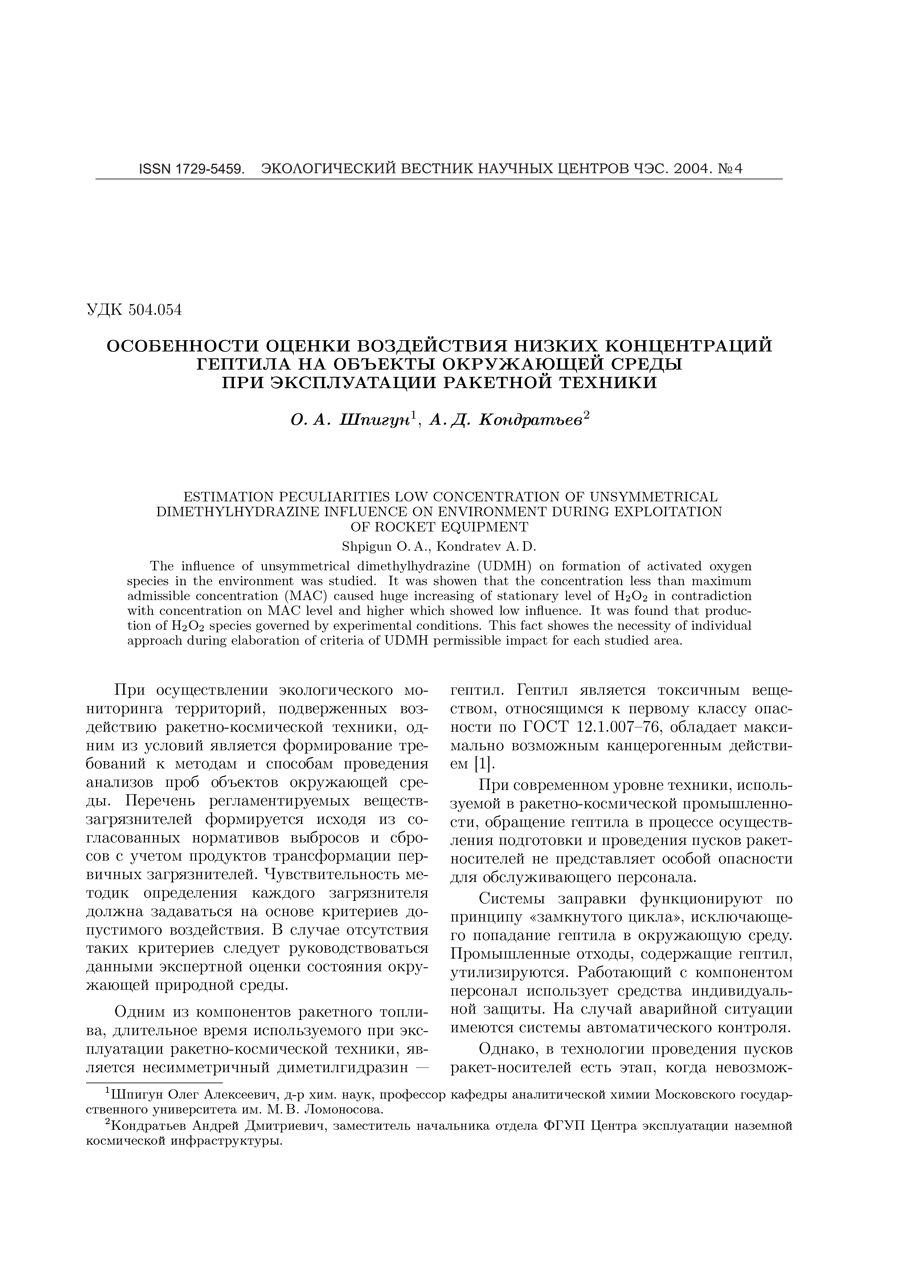Estimation peculiarities low concentration of unsymmetrical dimethylhydrazine influence on environment during exploration of rocket equipment
UDC
504.054Abstract
The influence of unsymmetrical dimethylhydrazine (UDMH) on formation of activated oxygen species in the environment was studied. It was showen that the concentration less than maximum admissible concentration (MAC) caused huge increasing of stationary level of H2O2 in contradiction with concentration on MAC level and higher which showed low influence. It was found that production of H2O2 species governed by experimental conditions. This fact showes the necessity of individual approach during elaboration of criteria of UDMH permissible impact for each studied area.
References
- Brendler-Schwaab S.Y., Volkner W., Fautz R. et al. Dimethylhydrazine: a reliable positive control for the short sanpling time in the UDS assay in viv // Mutat. Res. 2002. Vol. 520. No 1-2. P. 57-62.
- Кречетов П.П., Королева Т.В., Чудакова А.Р. Влияние несимметричного диметилгидразина на кислотно-основное и окислительно-восстановительные свойства почв // Современные проблемы загрязнения почв: Материалы Международной научной конференции. М., 2004. С. 59-60.
- Гольдштейн Н.И. Применение газофазного супероксида Ó2 в клинике // Российский медицинский журнал. 2003. №4. С. 49-52.
Downloads
Submitted
Published
How to Cite
Copyright (c) 2004 Shpigun O.A., Kondratev A.D.

This work is licensed under a Creative Commons Attribution 4.0 International License.




